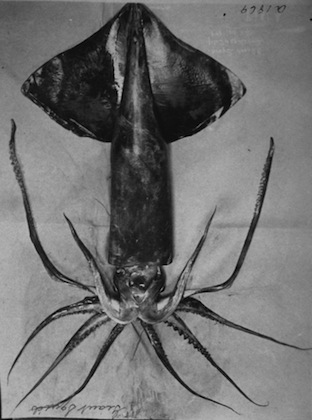351115-flying squid.jpg

Some squid can escape danger by leaping into the sky and flying away. Credit: National Oceanic and Atmospheric Administration
They may not be able to leap tall buildings with a single bound, but some squid can escape danger by leaping into the sky and flying away. The flight doesn’t last very long, but it can put some distance between the squid and its predators.
Not all squid can accomplish this feat of aerial derring-do. The ability to fly is limited to a few species — mainly the Japanese flying squid, which is found along the rim of the northern Pacific Ocean. Most adults are no more than about a foot long.
Researchers shot video of several squid in flight in 2011. Analyzing the video, along with studies of squid anatomy, revealed how they take to the skies.
It begins with a rocket-propelled launch — the squid takes in water at one end of its body and squirts it out the other in a powerful jet.
Once airborne, it spreads its fins and its arms, which have membranes between them, like the webbed feet of a duck. These structures act like wings — they produce lift, just like the wing of an airplane. They also provide maneuverability: researchers have seen the squid adjust the angle of the fins and arms to keep them stable in flight.
Squid have been seen to remain airborne for up to three seconds. In that time, they can travel up to a hundred feet, reaching a top speed of more than 20 miles per hour.
At the end of its flight, the squid folds its arms and fins to protect itself against the force of impact, then plunges back into the water — safe, at least for the moment, from the danger that sent it into the sky.

